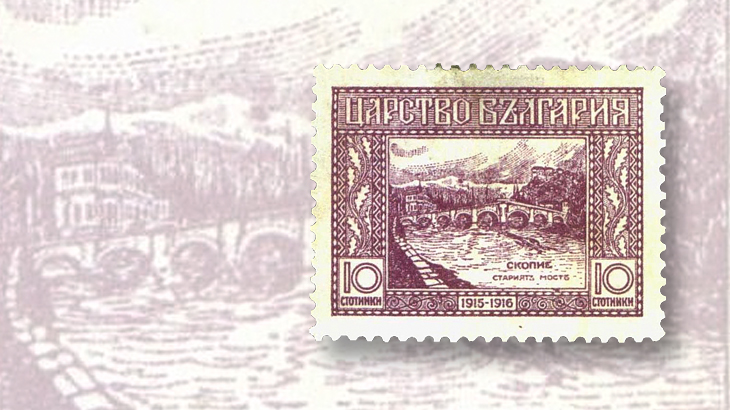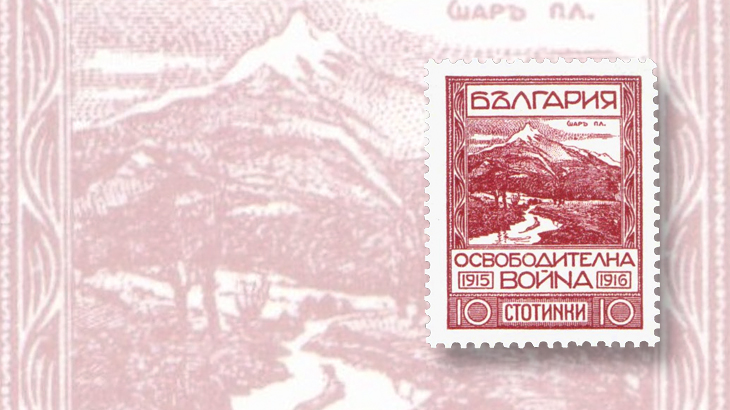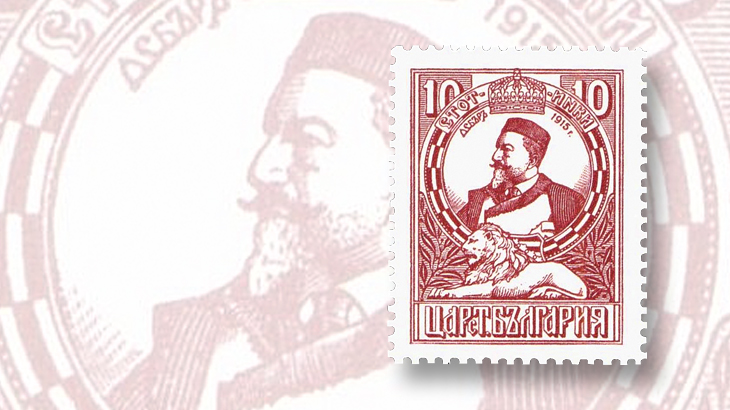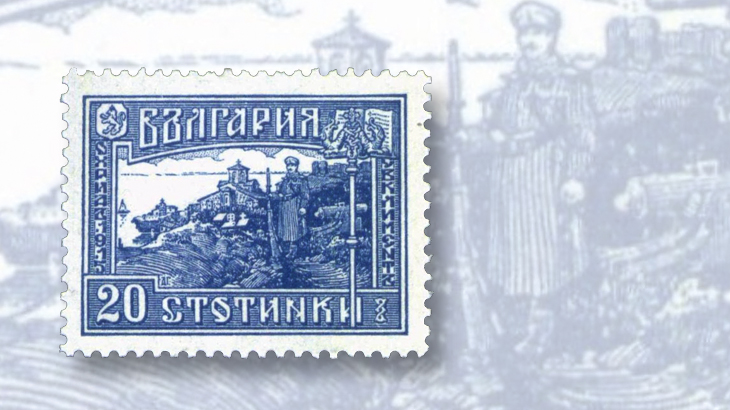World Stamps
Better never than late? Bulgaria’s post-WWI set caused quite a furor
By David A. Norris
A set of five Bulgaria stamps with the printed dates of 1915-1916 was not issued until 1921. One might call them error stamps, although they reflected errors of politics rather than printing.
Exhausted by defeat in the Second Balkan War in 1913, Bulgaria’s czar, Ferdinand I, at first avoided involvement in World War I. But in 1915, Ferdinand decided to join the Central Powers (Germany, Austria-Hungary and Turkey). His reward was to be the land of Macedonia, which was then divided between two Allied countries: Greece and Serbia.
At first, Bulgaria made territorial gains, but by mid-1918 the czar’s decision to enter the war had clearly been a grave mistake.
Connect with Linn’s Stamp News:
Like us on Facebook
Follow us on Twitter
Keep up with us on Instagram
Allied armies based in Greece repulsed the Bulgarians, and the Central Powers were on the edge of defeat.
Ferdinand abdicated in favor of his son Boris on Oct. 4, 1918, more than a month before the war ended Nov. 11.
In the end, Bulgaria gained nothing of Macedonia, and lost parts of other territories.
Six stamps (Scott 122-127) were issued by Bulgaria in 1917 and one (126A) in 1919 to commemorate the Macedonian campaign.
Another set of stamps to mark the expected victory in Macedonia, inscribed with the dates 1915 or 1915-1916, was ordered from a German printer.
Delivery of the latter stamps was delayed, and amid Bulgaria’s defeat and the collapse of Imperial Germany, the stamps were forgotten.
In 1921, Bulgarian post offices almost ran out of stamps while awaiting a shipment of new stamps from a British printer.
At this point, about six years after they were ordered, the long-delayed wartime stamps from Germany were delivered.
Five of these stamps, Scott 153-157, were placed on sale June 11, 1921. A sixth, a purple 50-stotinka stamp, was delivered but not issued.
Using these old stamps was thrifty, but politically and diplomatically unwise for Bulgaria.
The two 10s claret stamps (Scott 153-154) offended many Bulgarians by depicting two different images of the unpopular, abdicated Czar Ferdinand.
The first of the two 10s claret Ferdinand stamps also aroused serious reactions from Bulgaria’s neighbors.
Scott 153 shows a map of “Greater Bulgaria” in the background of the design.
This map includes vast swatches of territory that, after 1918, belonged to Romania, Greece and Yugoslavia.
The other three stamps in the set (Scott 155-157) further stirred international indignation by portraying scenes in the conquered lands that Bulgaria lost after the war.
The neighboring countries of Bulgaria denounced the controversial stamps as incendiary propaganda, and at the insistence of the Allied powers, Bulgaria was compelled to withdraw the five stamps after they had been on sale for only three weeks.
The much delayed appearance of the stamps and the emotional reaction to them that led to their quick removal make these issues tangible reminders of the earthshaking changes that World War I brought to Europe.
MORE RELATED ARTICLES
Headlines
-
US Stamps
Oct 7, 2024, 3 PMMcMurtrie dismissed as APS education director following Sept. 21 arrest
-
US Stamps
Oct 7, 2024, 12 PMVasiliauskas named president of Mystic Stamp Co.
-
US Stamps
Oct 6, 2024, 5 PMApgar souvenir card available
-
US Stamps
Oct 6, 2024, 4 PMFirst Continental Congress and U.N. stamps receive Scott catalog numbers










